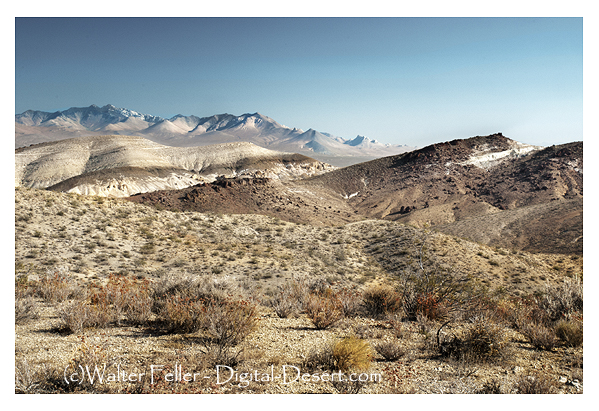
In succession, there followed strikes at Last Chance and Red Rock canyons, Bonanza Gulch and Summit Dry Diggings. It was at the latter that three discouraged prospectors decided to move on and investigate the iron stained hills of what is now the Rand Mountains. Charles Burch am, ex-cattleman and merchant, Frederick Moores, newspaperman, and John Singleton, millwright, were rewarded with the discovery of massive gold bearing quartz this was the beginning of the sensational Yellow Aster gold mine in 1895. They called their claims "Rand," after the noted district in Transvaal, South Africa. Dr. Rose Burcham, wife of Charles Burcham, Grubstaked the trio.
News spread like wildfire, and hundreds of prospectors combed the surrounding hills. Tents and hastily improvised shacks were thrown up in the original pioneer camp, located above present Randsburg. As additional claims were staked out, the settlement spread down the hill and became Rand Camp, forerunner of Randsburg. Big Butte, Little Butte, King Solomon, Sunshine, Windy, and other mines were opened. The boom was on in earnest. By the end of 1896, the population had swelled to 1500 and was still growing. Eugene Garlock set up the first stamp mill nearby, on the site which now bears his name. This settlement mushroomed to several hundred almost overnight.
Space does not permit describing the hectic boom days, or the picturing of downtown Randsburg with its wooden sidewalks, flanked by picturesque, and sometimes ornate, facades of saloons, dance halls, stores, bank, post office, theater, churches, and the school.
It has been estimated that up to 1940, the total gold production from approximately 100 mines in the Rand District reached some $40 million.
Down the hill from Randsburg, Johannesburg (or Joburg) was established in 1896. Named from the renowned mining center at Johannesburg, South Africa, its importance to the Rand District stemmed from the fact that it became the terminus of the Randsburg Railway which joined the Santa Fe at Kramer in 1898. Here stages and freighting wagons met the train, making the community a busy supply point for the mines, and vast desert to the north. The Randsburg Railway was discontinued in 1933, and the tracks were torn up the following year.
Shortly after the turn-of-the-century, prospectors south of Red Mountain uncovered what they called "white iron," a scheelite ore from which tungsten is made. However, it was not until World War I that the tungsten boom flared up at Atolia. This settlement derived its name from a combination of Atkins and De Golia, to pioneer operators. As many as 4000 people were engaged in tungsten mining to supply the peak wartime demands. The famous mounds of the "Spud Patch" can be seen today in the dry wash where individual prospectors dug a few feet below the surface and found nuggets which averaged the size of potatoes.
Then came the Rand District's third great find -- silver!
Previous - 1 - 2 - 3 - 4 - 5 - 6 - 7 - 8 - Next